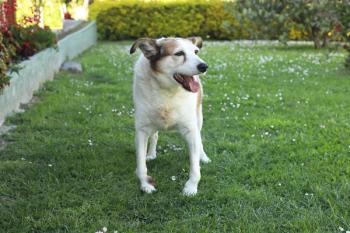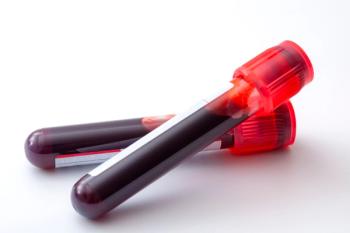
Before the breath becomes unbearable: How vet techs can convince anyone a pet needs a dental
Reach more pets, prevent more periodontal disease and make more money for your practice with veterinary technicians who specialize in awake oral assessments.
kirillica/stock.adobe.comSome of you hate it, some of you love it, but there's no debating that small animal dentistry is the fastest-growing, most profitable and most impactful in terms of overall pet health than any area of the veterinary profession. Those facts alone should-at a minimum-push you to analyze your dentistry profit center and look for ways to capitalize on something your practice (and your veterinary patients) can't live without.
I spend a lot of time training and consulting with veterinary teams on the importance of veterinary dentistry, and I can put most practices in one of four categories:
Those that still practice dentistry without intraoral radiography
Those that brought in intraoral radiography but don't use it, rarely use it, or don't know how to use it
Those that use intraoral radiography as part of their dentistry services regularly but need a little push to take them to the next level
Those that do everything well and provide the highest quality of overall dentistry to their clients.
I don't find too many practices that fall into the last category, and thankfully I don't find too many that fall into the first either. Most are in the middle-which means they're perfectly positioned to spend some time looking at what they provide and how they provide it.
Even when veterinary teams agree that dentistry is critical, many still don't know how to get pet owners to understand the need for it until it becomes a problem they can't ignore (usually because of mouth odor). By the time that happens, periodontal disease has already put some teeth on the path to extraction.
Cluing in pet owners
So, how can you make a client aware of dental issues in their pet? For the most part, this is a marketing question. To come up with the best approach, we need to first agree on some non-negotiable truths:
1. Owners rarely look in their pets' mouths and, for safety reasons, that's probably not a bad thing. Especially for cat owners.
2. Some important clinical signs are absolutely noticeable, but only one is measurable without having a patient under anesthesia. Calculus accumulation is something we can see and usually grade accurately on most awake patients. Periodontal disease, tooth resorption, plaque accumulation, fractures, unerupted teeth, some persistent deciduous teeth and furcation exposure generally require the use of a probe, explorer or intraoral radiographs to get the full picture-and those require anesthesia.
3. Anyone who thinks they can know what the treatment of a pet's mouth is going to look like prior to having that patient anesthetized, examined and radiographed is absolutely mistaken.
So, how do we market this condition to clients when we can't really prepare them for what their pet is going to need? I've seen a few different methods. At my previous practice, 92% of all dental patients needed at least one extraction. At my current practice, the majority of dental patients are routine cleanings without any treatment. The difference? A well-managed wellness plan that includes dentistry for all adult patients. Frequent (in this case, annual) cleaning-as is the case in human dentistry-simply helps avoid tooth loss. Period.
What can you do?
Some veterinary practitioners prefer to “stage” their dentistry-that is, put their patients under anesthesia for a cleaning and complete examination (including radiographs) but schedule all treatments for a later date. This method provides the opportunity to give a detailed and accurate estimate and treatment plan for what is to come.
As we know, though, many pet owners want it all done at once. They don't want their pet under anesthesia twice, and they definitely don't want to be told that there is an urgent need to fix something but it will have to wait until later.
And in the majority of practices, the veterinary team needs to convince the client that a procedure is necessary, even though nobody really knows what that procedure will look like or cost.
I've had great success with using an “awake oral assessment” as a tool to educate clients and encourage dentistry. For practices wishing to grow their dentistry department (which should be all of them), what can you do beyond the regular veterinary exam that is part of an annual wellness visit? Or what can you do in response to some problem the client has noticed?
The role of the veterinary dental technician is the key.
Unleash the power of the dental vet tech
Veterinarians often struggle to fit everything into limited face time with clients, and sometimes the discussion of dentistry gets pushed off in favor of the immediate reason for the visit.
Room technicians should be looking in every mouth while they measure vital signs and gather the patient's history. When they start the discussion about the pet's dental needs, it adds substantial weight when the veterinarian comes in and does the same. Immediately, the client has noted that two different people noticed this problem and felt it important to discuss.
Is that a technician making a diagnosis and prescribing a treatment? Nope. Technicians are empowered to assess measurable factors and note their observations, and because calculus is measurable, they can do it. Additionally, if your practice has a stated policy that doctors recommend a cleaning to remove calculus, the technician discussing this is simply forwarding the practice's stated recommendations-not unlike recommending deworming or flea control.
When clients ask about dentistry, the technician may provide general education without suggesting that they know what the client's pet specifically needs (again, no one can at this stage), and they can use visual tools to show clients the dental problems that many dogs and cats face.
Tip: Create a dummy client-patient profile in your computer system and upload sample radiographs that show dramatic periodontal disease, tooth resorption, fractures, periapical lucencies, mandibular fractures and so on, then show appropriate images to clients according to what their pet needs. When pet owners can see these conditions with their own eyes, they'll likely schedule that procedure. A well-trained dental technician can convince almost any client that their pet is a candidate for dentistry-because, let's face it, almost every pet is a candidate for dentistry.
This can also be done during technician appointments, as long as the technician doesn't stray into a diagnosis (one more time: it's impossible to do much more than measure and assess calculus while the patient is awake anyway).
Having technicians perform an awake oral assessment to measure and observe calculus accumulation is a great way to track patients and offers clients the ability to hear the status of their dog's or cat's dental health more frequently.
To get really aggressive, consider offering that appointment for free-your dental caseload will skyrocket, your clients' awareness of dentistry as a major component of their dog's or cat's health will grow substantially and, best of all, you'll be reaching more patients, preventing more periodontal disease and boosting your practice revenue. It's a win-win-win.
If you're not using an awake oral assessment as part of your launching pad for dentistry, you're probably realizing only a small percentage of your practice's potential. Empower your practice's technicians and watch your revenue go through the roof.
Long-time dvm360 magazine and Firstline contributor Kyle Palmer, CVT, is hospital manager for VCA Salem in Salem, Oregon, as well as a practice management consultant for a number of other hospitals.
Newsletter
From exam room tips to practice management insights, get trusted veterinary news delivered straight to your inbox—subscribe to dvm360.






